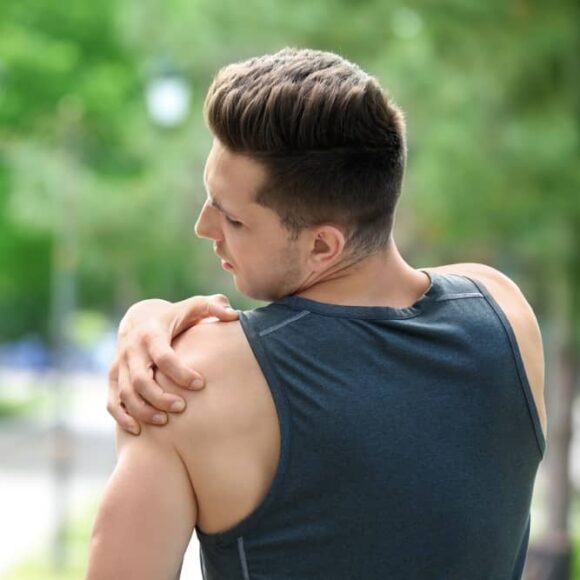
The labrum is a piece of cartilage that connects the top of your humerus (upper arm bone) to your shoulder joint. It works together with your rotator cuff to keep your arm in your shoulder socket.
The labrum can be torn by an injury or repetitive motion, and there are different types of labrum tears based on where the tissue is damaged.
You also have a labrum in your hips, but it’s much thicker and doesn’t get torn as easily as the one in your shoulder.
Labrum tears commonly happen with other shoulder injuries (like a rotator cuff injury, torn biceps, or a dislocated shoulder), so symptoms may vary based on what other shoulder structures are affected. Symptoms of labrum tears may include:
The labrum is located inside the socket part of your shoulder, which is called the glenoid. There are three main types of labrum tears based on where around the glenoid the labrum tears:
While a labrum tear can be caused by repetitive motion, the following accident types are examples of injuries that may involve a labrum tear:
Much of the time, a shoulder labrum tear can be treated with ice, rest, OTC anti-inflammatory pain relievers like ibuprofen (Motrin, Advil) or naproxen (Aleve), and physical therapy. Other treatments for a shoulder labrum tear include cortisone shots or surgery to remove or repair the damaged part of the labrum.
A minor labrum tear may require 6-8 weeks of physical therapy. It can take up to a year to heal from surgery for a more severe labrum tear, with 4 weeks spent in a sling followed by several months of physical therapy.
Surgery for a labrum tear is usually minimally invasive, with the necessary tools (including a tiny camera) inserted through small incisions in your shoulder to cut out damaged parts of the labrum that are limiting your range of motion or anchoring the labrum to your bones to keep it stable.
A chiropractor may be a great treatment option for a minor labrum tear. They can adjust your shoulder joint if necessary as well as adjust any neck or back vertebrae that may be putting additional strain on your shoulder muscles by being out of alignment.
Additionally, a chiropractor can show you stretches and strengthening exercises you can do to help stabilize your shoulder joint.
Without surgery, you can expect to spend an average of 4-6 weeks receiving chiropractic care for your labrum tear.
After surgery, chiropractic care starts with passive exercise, where the arm is moved by the chiropractor (or yourself after the chiropractor shows you how). Eventually, your care will switch to active exercises, where you start using your arm and shoulder in exercises designed to help strengthen your shoulder muscles.
CLICK HERE or call Southside Chiropractic Car Injury Clinic today at 904-497-0823 to schedule a consultation to see if we can help treat your shoulder labrum tear and get your shoulder back to normal function.